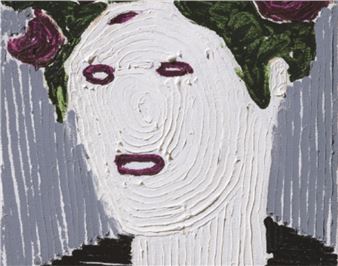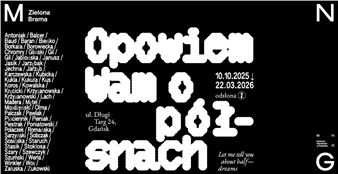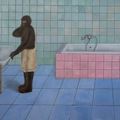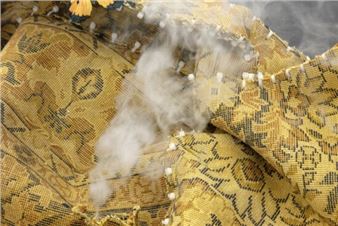Tomasz Ciecierski: 1945-2024
Tomasz Ciecierski liked to work in cycles, working through a certain thread in a series of paintings and drawings. The last two paintings he painted would probably also have continuations and developments in subsequent works. In two-part canvases, he combined seemingly incompatible visualities: radically simplified geometry and the unbridled ebullience with which he painted expressive paintings from the 1980s. Earlier, he “combined something incombinable” in two-part canvases from ten years ago, looking for the only relationship between them in their extreme differentiation. He developed this hybrid way of combining very different compositional elements already in the 1970s in alogical paintings, in which he destroyed the traditional logic of the pictorial field.
He also mixed different techniques and media, crossed the boundaries of the painting, constantly deliberating in his painting on the subject of painting. When looking at his creative work, it is impossible to follow a linear narrative; rather, to get be drawn into the circles of swirling leads. Moreover, even as a collector, he placed more confidence in chaos than in chronology. His painting is situated in the field of tension between continuity and rupture, perpetuation and renewal, in the field of relations between the current and historic. He often returned to his favorite motifs, abandoned topics, or previously signaled threads. In his latest paintings, he once again reached for simplified silhouettes. The rhythmic repetition of their rows creates a score of movement and dynamics being played in between thick black and juicy red, between rigorous geometry and the sweeping freedom of the painterly gesture.
These two negativ-like juxtaposed paintings are the last ones he left behind. In the exhibition dedicated to his memory, we show alongside them a little-known series of surprising painted self-portraits, presented publicly only once.
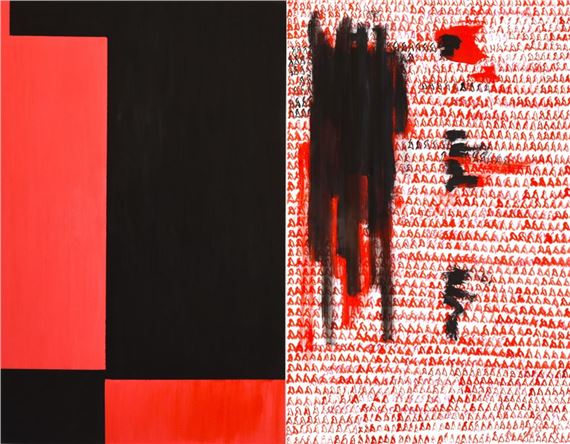
Recommended for you
Tomasz Ciecierski liked to work in cycles, working through a certain thread in a series of paintings and drawings. The last two paintings he painted would probably also have continuations and developments in subsequent works. In two-part canvases, he combined seemingly incompatible visualities: radically simplified geometry and the unbridled ebullience with which he painted expressive paintings from the 1980s. Earlier, he “combined something incombinable” in two-part canvases from ten years ago, looking for the only relationship between them in their extreme differentiation. He developed this hybrid way of combining very different compositional elements already in the 1970s in alogical paintings, in which he destroyed the traditional logic of the pictorial field.
He also mixed different techniques and media, crossed the boundaries of the painting, constantly deliberating in his painting on the subject of painting. When looking at his creative work, it is impossible to follow a linear narrative; rather, to get be drawn into the circles of swirling leads. Moreover, even as a collector, he placed more confidence in chaos than in chronology. His painting is situated in the field of tension between continuity and rupture, perpetuation and renewal, in the field of relations between the current and historic. He often returned to his favorite motifs, abandoned topics, or previously signaled threads. In his latest paintings, he once again reached for simplified silhouettes. The rhythmic repetition of their rows creates a score of movement and dynamics being played in between thick black and juicy red, between rigorous geometry and the sweeping freedom of the painterly gesture.
These two negativ-like juxtaposed paintings are the last ones he left behind. In the exhibition dedicated to his memory, we show alongside them a little-known series of surprising painted self-portraits, presented publicly only once.

 ARTISTS
ARTISTS









